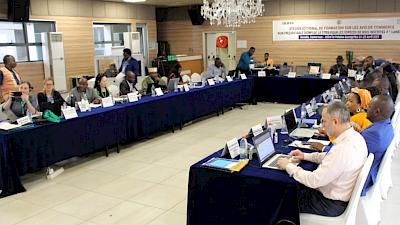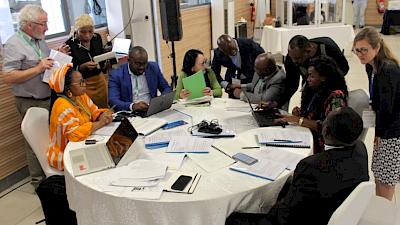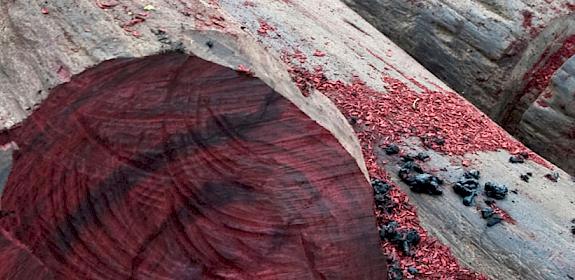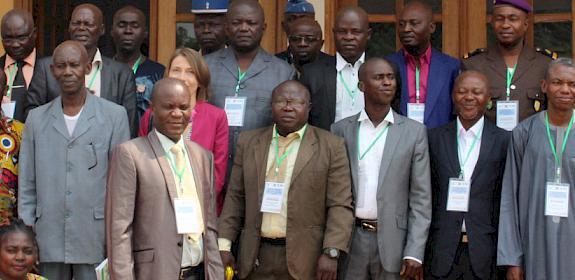Protecting trees in the world’s second-largest rainforest by ensuring their sustainable trade
At a time of climate and biodiversity crisis, unsustainable timber trade threatens certain tree species in Central Africa’s Congo Basin - the second-largest rainforest on the planet.

Central to tackling the problem of deforestation and biodiversity loss is finding a balance between enabling legal trade in timber, which is a vital source of government income and local livelihoods, and protecting species populations so that they continue to grow and flourish.
At a workshop in Douala, Cameroon last week, scientists and national CITES authorities had an opportunity to discuss and try out an updated tool to achieve this balance. To decide whether a scientific authority can approve the export of a CITES-listed species, a scientific assessment to work out how much trade the species can handle must be carried out, alongside consideration of how harvest and trade will impact on local biodiversity. These ‘Non-Detriment Findings’ (NDFs) enable an evidence-based decision to be reached in setting levels of legal and sustainable trade.
Since 2012, TRAFFIC and the Federal Agency for Nature Conservation in Germany (BfN) have worked together to develop guidance on making NDFs based on 9-Steps. This long-running collaboration has been generously supported by BfN with funds from the Federal Ministry for the Environment Germany (BMUV).

Hosted by Cameroon’s Ministry of Forests and Wildlife, TRAFFIC, and the Federal Agency for Nature Conservation in Germany (BfN), and including representatives from Gabon, DRC and the Republic of Congo, the workshop included an opportunity to apply the updated 9-step Guidance for NDFs for tree species* to selected case studies to determine that export is sustainable and can be allowed under CITES rules.
The workshop aimed to improve the protection of Afzelia bipindensis, traded under the local name of Red Doussié and recently listed on CITES Appendix II, by discussing all aspects concerning the evaluation of its sustainable use. This is most likely when scientific findings prove that the trade will not threaten the survival of the population in the exporting countries.
Afzelia bipindensis is considered Vulnerable on the IUCN Red List of Threatened SpeciesTM and is one of the most commonly traded species of Afzelia tree genus, largely exported from Cameroon.
The species is used as an exotic building material because it's durable, resistant to termites and fungi, and typically does not need treating.
Notes:
*The guidance being applied (version 4.0) is being finalised to take into account the newly developed and published CITES NDF guidance, which the new version (vs 4.0) is fully in line with. The 9-steps can be seen as a practical tool to implement the CITES NDF guidance.
TRAFFIC and BfN have developed a dedicated website for the 9-steps, which provides materials, online training and tools to assist with making NDFs https://www.9steps-cites-ndf.org/.
This article does not engage the responsibility of MINFOF.
About Federal Agency for Nature Conservation (BfN)

Supported by the Federal Agency for Nature Conservation (BfN) with funds from the Federal Ministry for the Environment Germany (BMUV)
Federal Ministry for the Environment Germany

Funded by Federal Ministry for the Environment, Nature Conservation and Nuclear Safety.




